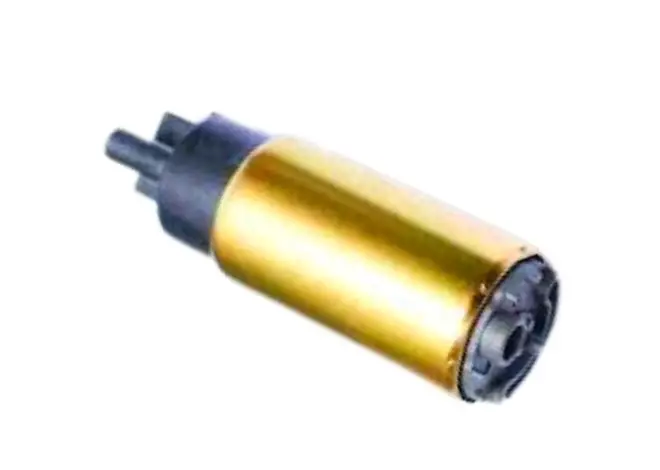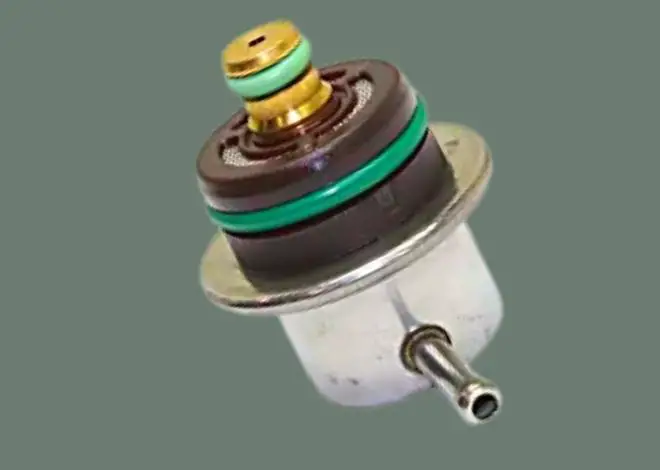Last Updated on May 21, 2025
What Does the P0003 Code Mean?
If you’re dealing with a check engine light and your scanner reveals the P0003 code, it means your vehicle’s Powertrain Control Module (PCM) has detected an issue with the Fuel Volume Regulator Control Circuit — specifically, a low voltage condition. The full definition of the P0003 code is:
Fuel Volume Regulator Control Circuit Low
In simpler terms, this diagnostic trouble code indicates that the PCM has detected that the voltage level in the fuel volume regulator circuit is below the expected threshold. This can negatively affect how fuel is regulated within your engine, which may lead to performance issues, poor fuel efficiency, and even safety risks if ignored.
The P0003 code is a generic OBD-II code, meaning it applies to all modern vehicles equipped with this system, regardless of brand.
👉 Also read: P0001 Code – Fuel Volume Regulator Control Circuit/Open
Causes of the P0003 Code
There are several potential causes for the P0003 code. These can range from minor wiring issues to more serious problems with key components of the fuel system. Below are the most common triggers for this code:
- ❌ Malfunctioning fuel volume regulator or faulty sensor connectors
- ⚡ Collapsed fuel volume regulator (FVR) solenoid
- 🔌 Damaged wiring harness – including corrosion, short circuits, or disconnections
- 💻 PCM (Powertrain Control Module) issues or programming errors
- 🔗 Disconnected or loose plugs associated with the fuel regulator
- 💧 Leaks in the fuel pressure regulator that affect performance and signal transmission
In many cases, the issue is electrical in nature. Corroded connectors or a broken wire can easily throw this code, even if the fuel system itself is functioning correctly.
🎥 Watch this quick video breakdown of fuel volume regulator issues:
Symptoms of the P0003 Code
Recognizing the symptoms associated with the P0003 code can help you act fast before more damage occurs. Here’s what you might experience if this trouble code is active:
- 🚨 Check Engine Light (CEL) remains on constantly or intermittently flashes
- 🐢 Limp Mode activation, which slows the vehicle down as a protective measure when the engine control system detects a major issue
- 🛑 Stalling — your vehicle may shut off unexpectedly, even while driving
- ⛽ Poor fuel economy and decreased engine performance
- 🌫️ Unusual exhaust emissions, such as black or white smoke due to unregulated fuel combustion
- 🔧 Catalytic converter damage, which can be both dangerous and expensive to fix

Symptoms of a faulty fuel volume regulator control circuit
You may also notice hesitation during acceleration or hard starts. These signs should not be ignored, as unresolved fuel regulation issues can snowball into larger engine and exhaust system failures.
👨🔧 Related read: Symptoms of a Bad Starter
How to Diagnose the P0003 Code
Diagnosing the P0003 code correctly is crucial for successful repairs. Here’s a step-by-step strategy that professional mechanics typically follow:
🔍 Step-by-Step Diagnostic Process:
- OBD-II Scan: Use an advanced scanner with factory reset capability. Read any stored codes and note if multiple DTCs are active.
- Visual Inspection: Inspect all fuel system wiring and connectors for signs of corrosion, shorts, or disconnections.
- Check Fuel Regulator & Solenoid: Examine the fuel volume regulator for internal faults or collapsed solenoids.
- Measure Voltage: Use a digital voltmeter to measure voltage across the regulator control circuit and compare it with the manufacturer’s specifications.
- Fuel Pressure Test: Use a fuel pressure tester to ensure the fuel system is within acceptable operating parameters.
- PCM Inspection: In rare cases, the PCM may be the culprit. A specialist may need to reprogram or replace it if it shows faults.
Here are some essential tools required during diagnosis:
- OBD-II Scanner with live data streaming
- Digital multimeter
- Fuel pressure gauge
- Circuit tester

Use diagnostic tools to assess the circuit, wiring, and pressure levels
👉 Also check: Freeze Frame Data Explained
How to Fix the P0003 Code + Repair Costs
Fixing the P0003 code involves addressing the underlying electrical or mechanical issue. Here’s what the repair process usually includes:
✅ Common Fixes:
- 🔌 Reconnect or replace damaged wiring or corroded connectors
- ⚙️ Replace the faulty fuel volume regulator
- 💡 Repair or replace the fuel pressure sensor
- 🔄 Update or reprogram the PCM, if necessary
- 🧪 Clear the code and conduct a road test to verify the fix
🛠️ Repair Process in Detail:
- Connect the OBD-II scanner and retrieve stored fault codes.
- Analyze the ECM data and identify the most severe or active issues.
- Address the highest priority fault first — often the fuel volume regulator.
- Repair/replace faulty components and clear the codes.
- Test drive the vehicle to confirm that the code does not return.
After repairs, if the P0003 code reappears, a deeper issue like PCM failure or internal engine wiring damage may be the root cause.
💵 Estimated Repair Costs:
| Service | Estimated Cost |
|---|---|
| OBD-II Scan & Diagnosis | $75 – $150 (per hour) |
| Fuel Volume Regulator Replacement | $200 – $500 |
| PCM Reprogramming | $100 – $300 |
| Wiring Repair | $50 – $250 |
| Total (Range) | $150 – $900+ |
Cost depends heavily on your location, your vehicle model, and your mechanic’s expertise.
Final Thoughts
The P0003 code is more than just a warning light — it’s a serious indicator that something is wrong with your vehicle’s fuel regulation system. Ignoring it could lead to expensive repairs down the line or even compromise your safety on the road.
If you’re not comfortable with diagnostics or electrical troubleshooting, we highly recommend getting assistance from a certified mechanic. Fixing this code quickly ensures that your engine stays healthy and efficient.
🔧 More Trouble Code Fixes:
- ✅ P000A Code – Camshaft Position Slow Response
- ✅ P0015 Code – Timing Over-Retarded Bank 1
- ✅ P0031 Code – HO2S Heater Control Circuit Low
FAQs About the P0003 Code
1. What does the P0003 code mean on a car?
The P0003 code indicates a low voltage in the Fuel Volume Regulator Control Circuit, meaning the PCM cannot properly regulate fuel delivery to the engine.
2. Can I drive with the P0003 code active?
It is not recommended. Driving with the P0003 code active may lead to engine performance issues, stalling, or further damage to components like the catalytic converter.
3. What causes a P0003 code to appear?
Common causes include a faulty fuel volume regulator, wiring issues, a collapsed FVR solenoid, a malfunctioning PCM, or connector corrosion.
4. How do I fix the P0003 code?
Fixes may include repairing damaged wiring, replacing the fuel volume regulator, reprogramming the PCM, or resolving connector issues. Always start with a thorough diagnostic scan.
5. How much does it cost to repair a P0003 code?
Repair costs range from $150 to $900+, depending on the specific issue, labor costs, and your vehicle’s make and model.
6. Will clearing the code fix the problem permanently?
No. Clearing the code without fixing the root cause will only temporarily remove the check engine light. The code will likely reappear if the underlying issue isn’t resolved.
7. Is the P0003 code common in all vehicles?
Yes, the P0003 code is a generic OBD-II code and can appear in most modern vehicles regardless of make or model.
8. What tools do I need to diagnose a P0003 code?
You’ll need an OBD-II scanner, a digital multimeter, a fuel pressure gauge, and sometimes a service manual for reference.
Meet our professional car mechanic, Russell D. Steele, who has been in this field for five consecutive years and works with several automotive companies. He completed the "AUTOMOTIVE & LIGHT DUTY DIESEL TECHNOLOGY" course from NorthWest Lowa Community College, where he learned essential diagnostic and transportation management skills and became a certified mechanic.
